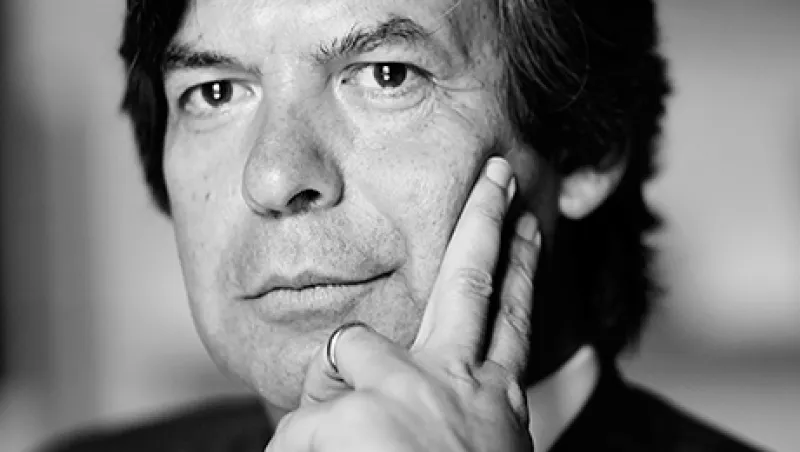In late July, Massimo Mezzaroma, an aristocratic businessman who owned A.C. Siena, the 110-year-old soccer team of the Tuscan city, announced with “death in his heart” that the team had collapsed into bankruptcy, with more than €74 million ($94 million) in debts. Only a few weeks earlier, the town’s eight-time Italian championship basketball team, Mens Sana, had been placed in liquidation to the outrage of thousands of fans. “The sunset in the Piazza del Campo,” lamented the newspaper Il Fatto Quotidiano, referring to Siena’s historic medieval square, “has never been so black.”
Although exorbitant salaries and creative accounting appear to have been the real cause of the two teams’ collapses, public anger was directed at Banca Monte dei Paschi di Siena (MPS), the local lender that is the world’s oldest bank and held most of the teams’ debts. “You have stolen our faith,” read a huge banner unfurled by protesters outside the bank’s 14th-century headquarters after MPS cut off the teams’ life support.
Coming just a month after the bank raised €5 billion in a record-breaking rights issue aimed at fueling a turnaround at the troubled lender, the bank’s refusal to provide fresh financing to the local sports teams made clear that MPS’s management had lost patience with the many small firms in the region that collectively owe it €30 billion. “The bank’s hands are tied because it needs to raise capital,” said Siena mayor Bruno Valentini (see also “Italy’s Monte dei Paschi Is Shrinking to Survive”).
The tough stance may be good news for the bank but bad news for the economy. Like many lenders in Italy, MPS has maintained loans to plenty of deadbeat borrowers rather than foreclosing because it didn’t have the capital strength to absorb losses. Lately, however, banks have bolstered their capital bases and begun to take more-aggressive steps to get to grips with their troubled loans. Such moves risk dealing a fresh blow to the country’s economy, which has just slipped back into recession for the third time since the 2008–’09 financial crisis. The critical question is whether the actions will provide a cleansing that prepares the economy for a rebound or provoke a downward spiral of bankruptcies, recession and even more bank losses. Corporate bankruptcies increased 15.9 percent in Italy in 2013, exceeding Spain’s 14.6 percent rise, according to Creditreform International, a Neuss, Germany–based credit information service.
MPS reported its ninth consecutive quarterly loss in the three months ended June 30, a period that saw Italy’s gross domestic product decline by 0.2 percent from the previous quarter. “The tough economic environment may lead to a time delay in our delivery on the revenue side,” MPS CEO Fabrizio Viola admitted on an August 8 conference call with analysts.
This is bad news for the entire Italian banking sector as well as the economy as a whole. “Italian banks depend on the macro economy improving,” says Fabrizio Bernardi, a Milan-based banking analyst at Fidentiis Equities. “The problem of the banks is the problem of the government. The government is doing nothing.”
That’s not strictly true. Earlier this year Prime Minister Matteo Renzi cut income taxes for low-income earners by €10 billion and trimmed another €10 billion off payroll taxes in a bid to reduce labor costs and spur employment. But those measures are proving too little, too late to turn around the economy.
It’s not only Italy that is suffering. The economy in the 18-nation euro area stalled in the second quarter, with output dropping slightly in Germany, and many analysts fear the bloc will be hit by economic fallout from the crisis in Ukraine as the EU and U.S. have ratcheted up sanctions on Russia.
On September 4 the European Central Bank cut its key refinancing rate by 10 basis points, to just 0.05 percent, and announced that it would start buying private asset-backed securities. President Mario Draghi said the measures were designed to stave off deflation and get the euro area’s economy out of the doldrums. The moves sent the euro sharply lower for the first time in several years, which could help Italy’s export-oriented economy.
Before Draghi acted, the Bank of Italy in July had slashed its projected growth rate for the Italian economy in 2014 by half a percentage point, to 0.2 percent. Ratings agency Moody’s was even more pessimistic, predicting the economy would contract by 0.1 percent for the year. And it’s not just government agencies that are turning gloomy. A global poll released by the Pew Research Center in early September showed that individual Italians were much more pessimistic about their prospects than even Spaniards, with 36 percent expecting the economy to get worse.
The year wasn’t supposed to turn out this way. Just six months ago the outlook for Italy and its financial institutions appeared to be the brightest in several years. In February the ECB launched an asset quality review, or AQR, and stress test of 130 major European banks that it hopes will clean up the region’s troubled banking system and restore confidence. Italy’s major lenders rushed to get themselves into shape for the asset review and stress test, results of which are due to be announced in late October or November. Nine banks have announced capital increases totaling €10 billion this year, enabling them to take aggressive write-downs on their loan books and begin to sell bad assets. Banks have also taken a sharper knife to costs in a bid to boost their operational profitability.
The AQR and stress tests are also anticipated to trigger consolidation in the very crowded Italian banking sector, which has far more institutions and branches than comparable European countries’. “I think this is a prelude to a wave of M&A that will have to happen in Italy,” says Andrea Filtri, London-based analyst for Italian investment bank Mediobanca. “The only way to gain scale and cut costs further is by merging.”
The potential for asset disposals is immense. Italian banks had a massive €172.3 billion worth of nonperforming loans on their books at the end of July, or about 9 percent of assets, up from €166.5 billion in April and the largest total of any country in Europe, according to the Italian Banking Association. U.S. private equity firms that specialize in distressed debt have been flocking to Italy, licking their chops at the prospect of a major fire sale. Actual sales have been relatively modest so far, though, because most banks have been husbanding their capital until the ECB finishes its AQR and stress test. Those exercises are intended to determine whether the banks have enough risk-weighted capital to withstand another financial crisis. Taking a loss on the sale of a bad asset reduces capital, which is why Italy’s bank managers have, until recently, shunned asset sales like a plate of overcooked pasta.
UniCredit, Italy’s biggest bank by assets, has been an early mover on restructuring. It posted a whopping €15 billion loss in the fourth quarter of 2013 after taking €13.7 billion in provisions for bad loans. That measure boosted the bank’s provisions to 50.2 percent of its nonperforming loans, which is on a par with the best-capitalized European banks.
Roberto Nicastro, the general manager, or No. 2 executive, at UniCredit, tells Institutional Investor that the high coverage ratio makes it more likely that the bank will be able to sell those assets eventually. “After making big provisions in 1998 and 2000, we saw that we reserved more than what was needed, and [we] expect that to happen again,” he says in an interview at the bank’s new headquarters, a trio of curved glass skyscrapers designed by the architect César Pelli that overlooks Milan’s Garibaldi railway station. Asset sales are likely to accelerate after the ECB completes its supervisory review, he adds: “The higher the coverage ratio, the more you are prone to sell.”
Nicastro says UniCredit has closed 1,500 branches and plans to shutter 600 more by next year. Italy’s big banks have resorted to branch closures and layoffs to bolster their bottom lines because the loan market is so stagnant. Fidentiis’s Bernardi reckons that Italian banks will lay off 10 percent of the industry’s 300,000 employees in the next few months.
UniCredit reported net income of €1.1 billion in the first six months of 2014, up 37.8 percent from a year earlier, even though revenue fell by 3 percent. It was a reduction in costs — down 1.2 percent in the first half — that accounted for most of the improvement in profitability.
UniCredit’s crosstown rival, Banca Intesa Sanpaolo, Italy’s second-largest bank by assets, also had a good first half. Net income increased 71 percent from a year earlier, to €720 million.
In addition to the good operating result, Intesa has the best common equity capital position in Italy, and one of the strongest in Europe, at 12.9 percent, well above the 7 percent minimum required under the Basel III capital rules. CEO Carlo Messina tells II that he is confident the bank will pass the AQR and stress test with flying colors.
“We had a very negative environment, a real stress test condition in Italy in the last year,” Messina says. “But we increased common equity from 10 percent to more than 12 percent, increased the liquidity reserve and increased medium-term funding. No other bank in Europe has such an excess of capital.” Then he adds with typical Milanese bravado: “I’m in a position to say that Intesa Sanpaolo is the winner in the competition with its European peers.”
Unlike major banks in other countries, Italian banks get relatively little income from securities trading and have traditionally relied heavily on interest income for their profits. Messina explains that, like UniCredit, Intesa Sanpaolo is trying to diversify its revenue sources and grow fee-generating businesses such as mutual funds and insurance.
Messina trumpets the strides made by the company’s asset management division, where portfolio management fees rose by 19.4 percent in the second quarter. (For the group, total fee and commission income rose 9 percent in the first half, to €3.3 billion.) The group has been persuading customers to switch their savings from government bonds, which pay the bank only a few basis points in custodial fees, to mutual funds and insurance, which pay between 1 and 2 percent. “Last year we switched €20 billion [from bonds] to assets under management,” he says proudly. That’s nothing to sneeze at — about €200 million in new fees.
It’s a similar story at UniCredit and MPS, which are growing their fee-generating businesses too. Second-quarter fee revenue was up 8.5 percent, to €1.88 billion, at UniCredit and up 7.2 percent, to €871 million, at MPS.
Another innovation that is gaining a lot of attention is online and mobile banking. Nicastro says that a decade ago customers would have about 30 contacts a year with the bank: ten times by entering a branch and 20 times using an automated teller machine. Now they contact the bank about 200 times a year, using a smartphone 150 times and going through a call center or ATM 15 times. The average customer enters a branch only twice a year.
By improving its offering, UniCredit has achieved a dominant 28 percent share of the online banking market in Italy. In July the bank floated a 30 percent slice of its online banking subsidiary, FinecoBank, on the Milan stock exchange, raising €2.6 billion and generating additional capital ahead of the ECB stress test.
Although asset management and online banking will continue to play a greater role in the future of Italy’s banks, the key issue for many analysts is how they deal with the past: namely, the mountainous legacy of nonperforming loans. Messina says that with an economic upswing many of the small and midsize companies will be able to resume paying back their loans to the bank. But few analysts believe the problem can be resolved that simply and painlessly.
In the U.S. the Troubled Asset Relief Program spent $225 billion of taxpayer money in the wake of the financial crisis to inject capital into banks and buy illiquid, difficult-to-value assets. In Spain the government set up the Fund for Orderly Bank Restructuring (FROB), which bought €62 billion of property loans from Spanish commercial banks as a condition for a €100 billion bailout from the European Union and the International Monetary Fund.
Italy has not considered any such bank rescue program. The government — struggling to cope with a debt of 135 percent of gross domestic product, second in the EU only to Greece’s — doesn’t have the resources, and both Rome and its EU partners are determined to avoid an Italian bailout. As a result, the banks are saddled with huge sums of nonperforming loans from which there seems no easy way out. Banks are loathe to sell them because any buyer would pay only a fraction of the original price, further damaging the banks’ capital positions.
Francesca Tondi, an Italian bank analyst at Morgan Stanley in London, says that many of the assets would sell for 20 cents on the dollar and some, such as consumer loans, are probably worth just 5 cents on the dollar. Yet the banks carry these loans on their books at the full face value. UniCredit has €82 billion of such impaired loans on its balance sheet; if Tondi’s assessment is correct, any sale of these assets at mark-to-market prices would more than wipe out all of UniCredit’s tangible equity of €47 billion. The same is true for all the other Italian banks.
The banks have taken some baby steps toward selling their assets, but they are squeamish about disclosing any details. The reason is clear: Once market players know what a bank has sold an asset for, the next prospective buyer will offer that much less. Nevertheless, the AQR has put pressure on banks to get moving, and some assets have begun to quietly trickle onto the market. UniCredit began by selling €950 million worth of bad loans to Cerberus European Investments last December. Earlier this year it sold a portfolio of commercial credit worth €700 million to British private equity group AnaCap Financial Partners and €910 million in mezzanine project loans to Mariner Investment Group, a U.S. hedge fund firm.
At the same time, MPS sold €500 million of bad loans to Fortress Investment Group, the New York–based private equity firm. Although bankers insist these are only first steps, the amounts are tiny given the size of the bad-debt problem. Even if UniCredit sells €5 billion worth of nonperforming loans, it will still have another €76 billion to work through.
“The real question for banks like UniCredit and Intesa is: Have they covered their bad loans in a good way?” asks Fidentiis Equities’ Bernardi. “We need one bank to sell 50 percent of its bad loans all at once; otherwise we’ll never know.”
The huge pile of nonperforming loans is also affecting how the banks look at new business. Ask any business executive in Italy, and he or she will tell you that it is almost impossible to get a bank loan. Not surprisingly, the banks are reluctant to lend to small and midsize companies no matter how low Draghi cuts interest rates or how much liquidity he tries to inject into the banking system through the ECB’s new targeted long-term refinancing operations. The TLTRO program, announced in June, generated surprisingly little demand at the first auction, in September, with the central bank allotting €82 billion, or barely half the amount analysts had expected. “In Italy a very large part of the corporate segment is generating bad loans,” says Bernardi. “Banks don’t care about cheap funding costs if there is a risk they won’t get their money back.”
Fortress is also a finalist in an auction for UniCredit’s debt collection division, which is known as UniCredit Credit Management Bank. Nicastro would not provide any details of the deal other than to say that it would include personnel involved in recovering funds from defaulted companies and an unspecified amount of UniCredit nonperforming loans to get the buyer started. Reports say that the talks, which were due to wrap up in June, have bogged down between UniCredit and the two remaining suitors: Fortress in association with Italian private equity firm Prelios and a consortium led by Lone Star Funds, the Dallas-based private equity firm headed by John Grayken, who made his name buying up bad assets from U.S. savings and loan institutions in the 1990s.
Fortress may have the inside track this time because it is being advised on the deal by Mediobanca, whose largest shareholder is UniCredit. Fortress did not return calls seeking comment.
UniCredit and Intesa have also reached an agreement with New York–based private equity firm KKR and turnaround specialist Alvarez & Marsal Capital Partners of Greenwich, Connecticut, to create a workout vehicle. KKR declined to comment on the deal, but Nicastro and Messina say they are each putting €1 billion of assets into the investment vehicle. These are not deadbeat loans but restructuring situations in which the banks see the possibility of reviving businesses under good management, which is the bread and butter of U.S. private equity firms.
UniCredit and Intesa have also set up separate units to remove dud loans from the banks’ core businesses and work out or sell down those assets.
Nicastro says UniCredit’s workout entity, which has 1,300 employees and €87 billion in assets, should help improve loan recoveries and minimize write-offs. “Recovering an NPL is a different job from doing new lending,” he says. “It’s a matter of job specialization and focus.” He adds that UniCredit is not calling the noncore portfolio a bad bank, as such entities have been dubbed in the media.
Morgan Stanley’s Tondi says the bad-bank approach has been successful in other European markets, such as Germany, Switzerland and the U.K. “I think at this stage it’s important for the Italian banks and for the market that they actually track their core business and the noncore business separately because that helps the market understand what is actually the underlying profitability and what is a drag on earnings coming from assets that are being run off or sold off.”
Tondi notes that in Britain many analysts consider Lloyds TSB Bank to be better managed than Royal Bank of Scotland because it has been much more explicit about setting up a noncore unit.
Workout strategies can go only so far in restoring Italy’s banks. Most bankers believe the sector ultimately needs consolidation and expect it to start happening as soon as the asset review is completed at the end of October. Yet both UniCredit and Intesa say they are not in the market for acquisitions, which begs the question: Who is? There had been some early speculation that France’s BNP Paribas, which entered Italy through the €8.9 billion acquisition of Banca Nazionale del Lavoro in 2006, might be interested in bulking up by acquiring a midsize Italian bank, but the French bank’s appetite — and pocketbook — for deals may be limited. In June, BNP Paribas agreed to pay $8.9 billion in penalties and plead guilty to violating U.S. sanctions on Cuba, Iran and Sudan.
By most accounts, the two most likely targets for takeovers or mergers are MPS and Banca Carige, a Genoa-based bank nearly as old as MPS. Both are perceived to lack scale and need capital, and both have seen their long-standing ownership structures effectively collapse, leaving them open to deals.
Traditionally, most Italian banks have been majority-owned by foundations rather than publicly listed entities with broad shareholder bases. MPS and Carige have suffered hard times in recent years, causing the foundations that live off their dividends to flounder. Investors have watched dumbfounded as MPS would announce a juicy dividend right after being forced to float a capital increase. But faced with huge equity raisings in the past few months and the possible dilutions of their ownership, the foundations at MPS and Carige have sharply reduced their number of shares.
In fact, MPS’s foundation owns just 2.5 percent of the bank’s outstanding shares, down from 33.5 percent in 2001, and Carige’s foundations own 10 percent, down from 44.5 percent in 2006. At each bank a suitor could easily become majority owner by acquiring shares on the open market.
Beyond these two banks the real target of a merger wave should be the country’s hundreds of cooperative banks, which lack the economies of scale to operate profitably. But as Morgan Stanley’s Tondi points out, these institutions’ byzantine ownership structures make consolidation unpalatable. Each shareowner gets just one vote regardless of the number of shares he or she possesses. So an aspiring acquirer could buy 90 percent of the outstanding shares but would have only a single vote at a meeting of shareholders, the same as someone owning less than 1 percent.
“Getting majorities to vote for any resolution is actually really hard,” Tondi says.
The Bank of Italy may be losing patience with the slow pace of consolidation, which it regards as essential to putting the country’s economic house in order. As a result, there is mounting speculation that the central bank will simply arrange shotgun marriages between struggling cooperative banks and large commercial banks that are better run.
Such strong-arm methods may seem unpalatable. But Italy’s banks desperately need a shake-up if they are to compete against other world players like Barclays, BNP Paribas and Deutsche Bank. The European asset review has forced them to start changing, but the real need is for a cleanup of their balance sheets by selling nonperforming assets, as banks in the U.S. and Spain did earlier. That may require some form of action by the new Renzi government. If it fails to act, the Italian economy may be condemned to more years of struggle.






